A cosmetic prosthesis is chosen if there is no prospect of walking function. Cosmetic prostheses are therefore made with an emphasis on a beautifully anatomically finished leg that is perceived by the outside world as a real leg.
Welcome To Amputee Care Center
powered by Spronken
An amputation is a life-changing event, but you are not alone. At the Amputee Care Centre (ACC), we guide you step by step through your recovery, from the operation to the fitting of your final prosthesis. Would you like to know how to choose the best prosthetist and what care you can expect? Discover our approach, expertise and personalised support after amputation.
We would like to invite you for a free, no-obligation introductory meeting.
Contact us by completing the Contact Form or by calling +32 (0)470 500 888. We are at your service.
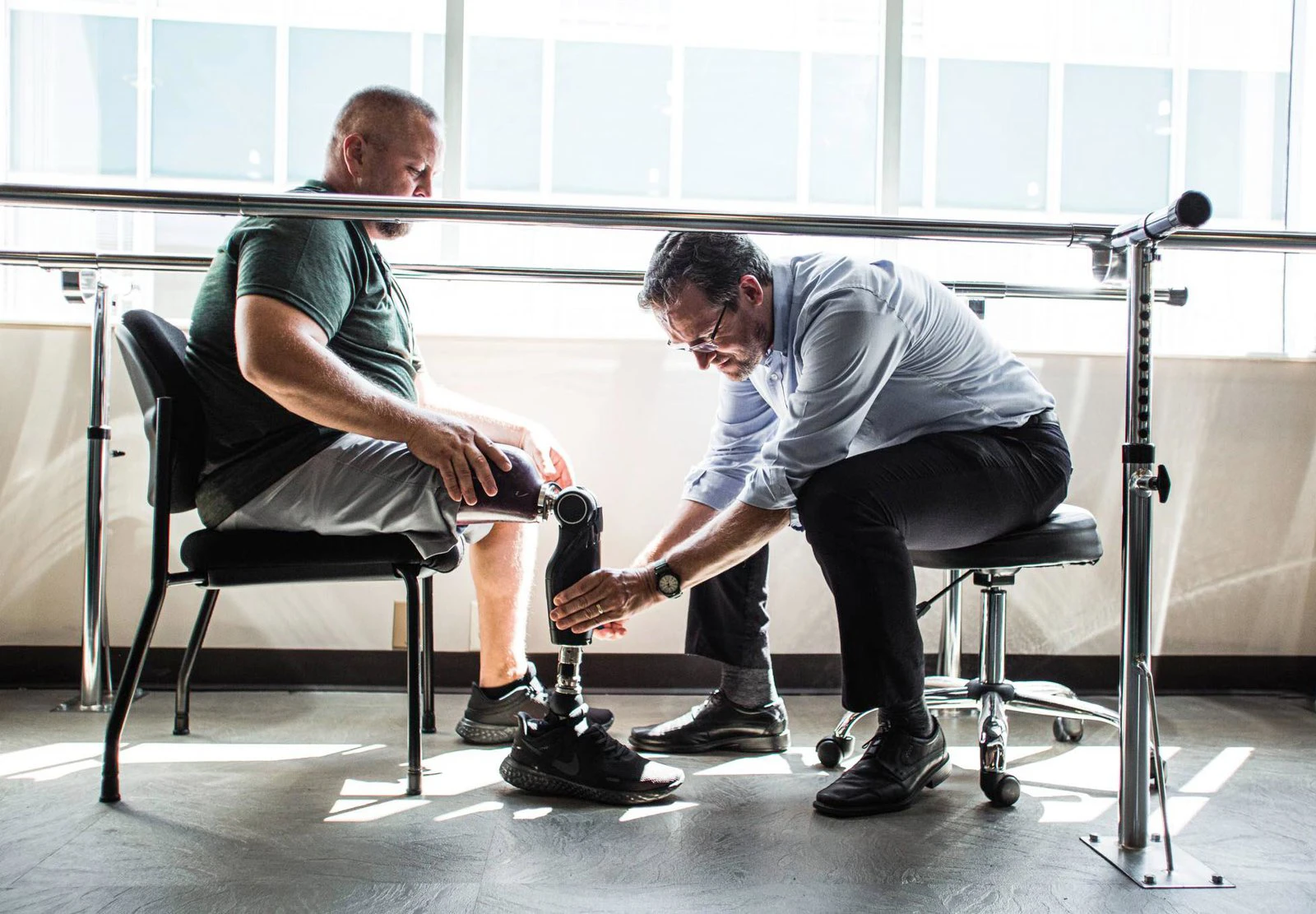
Immediately after your amputation, you will usually receive a vacuum dressing that immobilises the stump. This also protects the stump and helps prevent oedema formation. The first phase is extremely important for proper wound healing. After 5 to 7 days, a silicone liner is usually applied. This provides constant gentle pressure, which contributes to the optimal shape of the stump.
It is important to prevent swelling around the stump. This accelerates healing and also reduces the risk of pain, such as stump pain and scar problems.
The Amputee Care Centre (ACC) team specialises in post-operative compression therapy and we have expertise in stump care, oedema control and stump shaping. Our prosthetists support surgeons and nurses with guidelines and interdisciplinary cooperation in the hospital.
Advanced compression techniques optimise the healing process and prosthesis fit. By involving our team postoperatively, rehabilitation is accelerated and we guarantee amputees the best possible preparation for a successful prosthesis fitting.
This integrated method promotes faster healing, optimal shape for the prosthesis and reduces complications.

Some people suffer from so-called phantom pain after an amputation. This is because the brain continues to receive signals as if the amputated body part were still there. This can feel strange or even painful. It is good to know that this usually diminishes over time, although it is of course very unpleasant. At Amputee Care Center, we are happy to help you find a solution.
Hypnotherapy can be effective for some people against phantom pain after an amputation. Through relaxation, suggestion and visualisation, hypnosis influences how the brain experiences pain. It is often used as a complementary treatment for chronic or therapy-resistant pain. Although more research is needed, studies show that hypnosis is safe and can provide significant relief for certain patients.
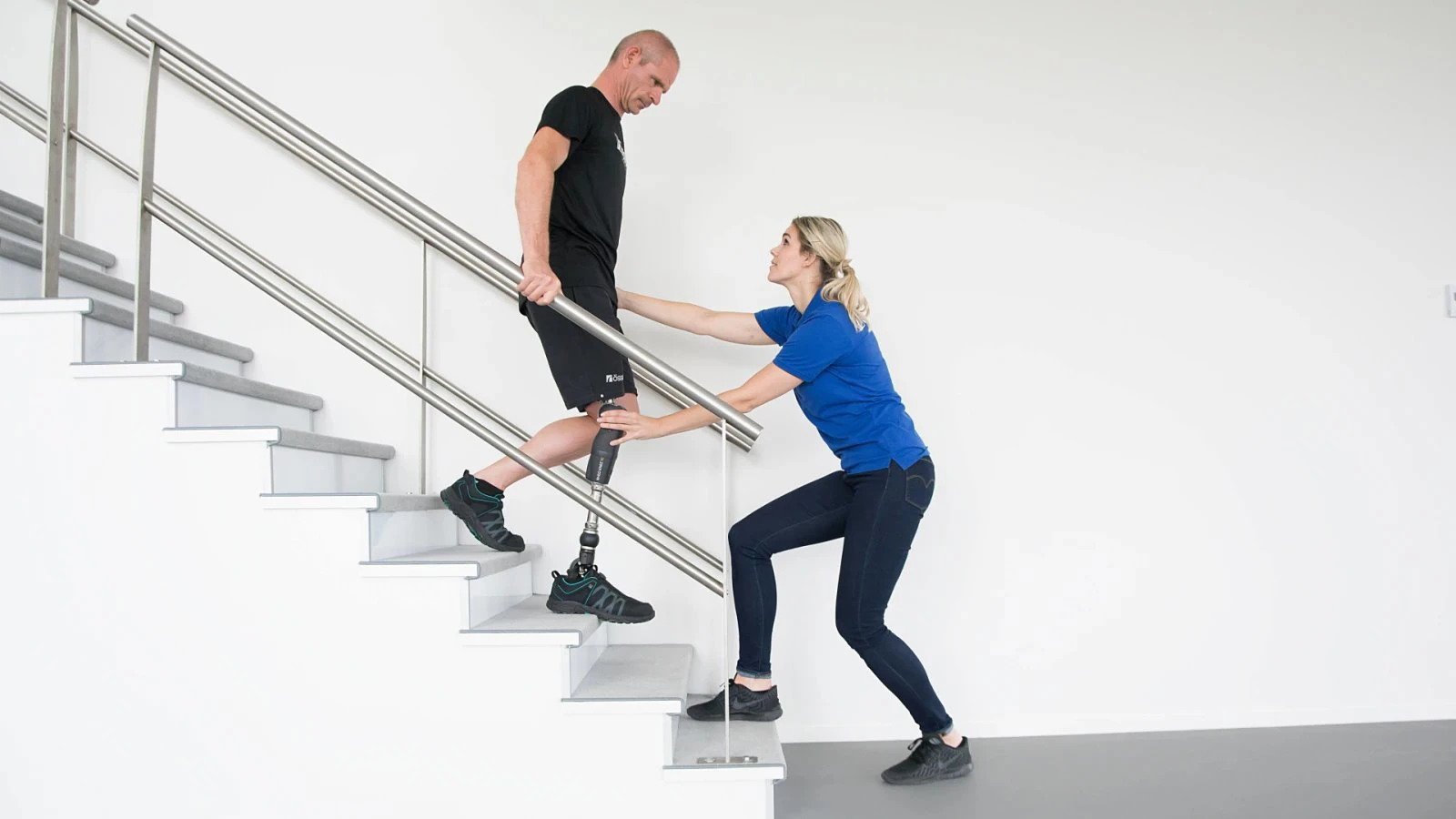
Bij Amputee Care Center geloven we in een persoonlijke, toekomstgerichte aanpak. Iedere stap, van wondverzorging tot actieve revalidatie en de uiteindelijke prothese, wordt op maat van jouw situatie gepland en begeleid. Zo bouwen we samen aan een nieuw begin.
Heb je vragen over wat je kunt verwachten na een amputatie? Neem gerust contact met ons op. We staan graag voor je klaar!
Contact us by completing the Contact Form or by calling +32 (0)470 500 888. We are at your service.
At the Amputee Care Center, we start prosthetic care as soon as possible after the amputation. Our approach is based entirely on the latest, scientifically proven guidelines in amputation care*. Early mobilisation and therapy ensure faster recovery, greater self-confidence and better preparation for using your prosthesis.
Our goal is to use active therapy to create the ideal conditions for efficient prosthesis use.
This means:
Our prosthetists like to start working with your physiotherapy or occupational therapy team as early as possible. Prosthetic and physiotherapy care continues throughout the rehabilitation process and focuses on:
Multidisciplinary collaboration is the key to a successful recovery after amputation. Together, we will build your new start.
*Fard et al., Amputation and prosthetics of the lower extremity: The 2020 Dutch evidence-based multidisciplinary guideline, Prosthet Orthot Int. 2022 Sep 15
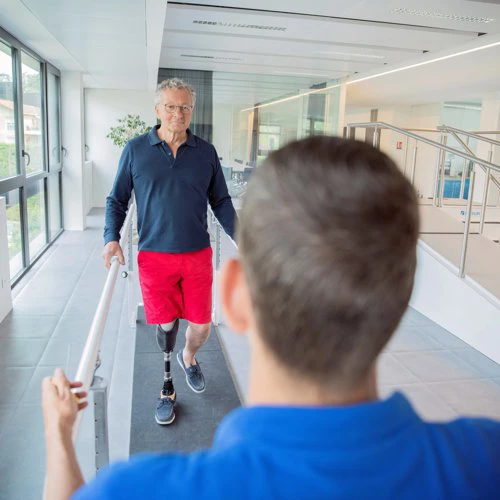
Certain medical specialists can write a prescription for a prosthesis. The prescription for your prosthesis will be written by a medical specialist in one of the following disciplines: orthopaedics, physical medicine and rehabilitation, paediatrics, rheumatology, neurology, surgery or neuropsychiatry. A prescription from a medical specialist is required if you wish to receive reimbursement or compensation from your health insurance fund or insurer.
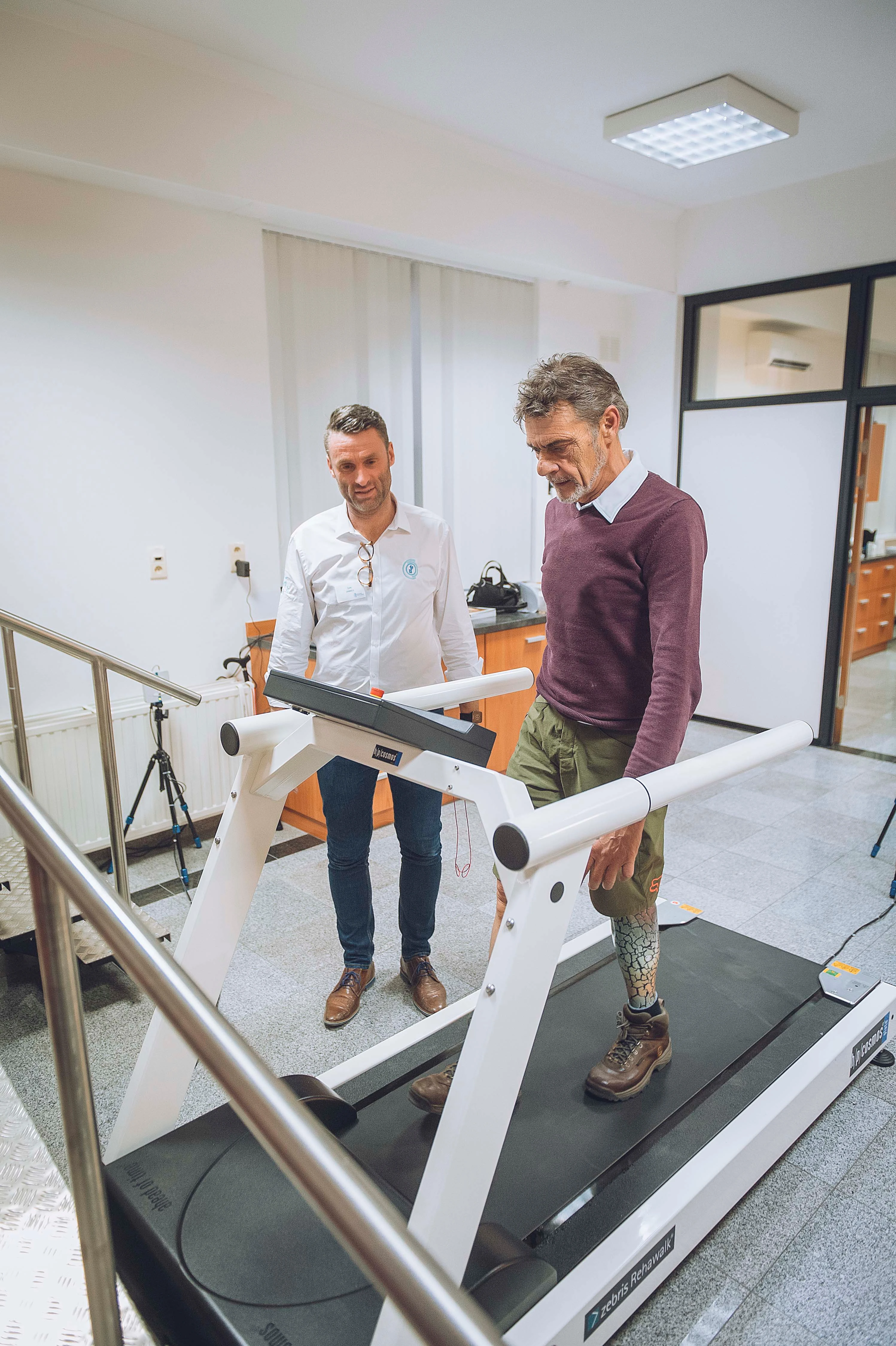
Most doctors, hospitals and rehabilitation centres choose to work with several orthopaedic companies. This approach promotes innovation, respects the patient's freedom of choice and stimulates quality through healthy competition. This creates a flexible and patient-centred care model in which both the doctor and the prosthetist can contribute optimally to the rehabilitation process.
The patient and doctor always retain the freedom to choose the prosthetist. You can always contact the Amputee Care Center for a second opinion consultation, free of charge and without obligation.
The medical team will decide in consultation whether the stump has healed sufficiently and is ready to bear weight. If this is the case, rehabilitation will start with an evaluation prosthesis. This temporary leg prosthesis will help you to stand upright again and learn to walk.
During rehabilitation, the multidisciplinary team and the prosthetist at the Amputee Care Center observe whether the stump is stable in terms of scarring, shape and volume. Once the stump has stabilised sufficiently, a decision is made in consultation about the transition to a permanent prosthesis.
The permanent prosthesis will only be provided after at least six months. At that point, your activity group will also be determined. This group determines the reimbursement of prosthetic components, such as microprocessor-controlled prosthetic knees or customised feet.
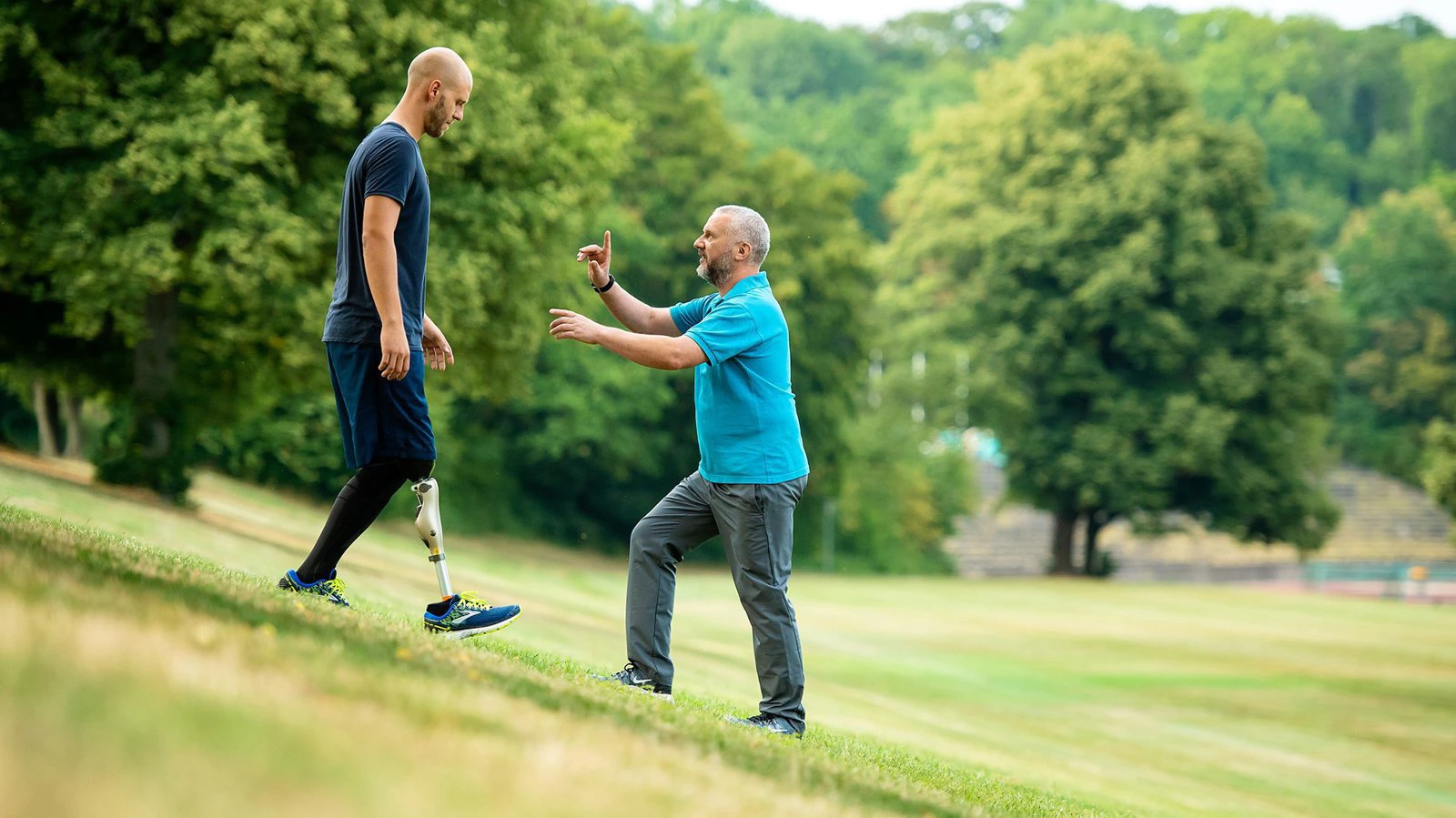
Your activity level as a prosthesis user determines the structure of your prosthesis. Prostheses for the lower limb (leg prostheses) are divided into different groups according to the Belgian health insurance funds RIZIV. The activity level determines the insurance amount:
A cosmetic prosthesis is chosen if there is no prospect of walking function. Cosmetic prostheses are therefore made with an emphasis on a beautifully anatomically finished leg that is perceived by the outside world as a real leg.
A transfer prosthesis is provided where there is limited prospect of walking function. Transfer prostheses are only used for short-distance travel, both indoors and outdoors, with the use of walking aids. With a transfer prosthesis, the emphasis is mainly on easy and quick donning and doffing of the prosthesis.
You have limited walking ability, use walking aids, but can move around without help from others. You also take part in social activities outside the home.
You are active and can walk with your prosthesis without walking aids and take part in social activities outside the home.
You are highly active, and your prosthesis must be capable of passing a walking test without walking aids or other support.
Prosthesis users classified in groups 3, 4 or 5 are eligible for a computer-controlled electronic prosthetic knee or MCK–MPK knee, provided they meet the specified conditions. The Amputee Care Centre in Genk (Belgium) is fully equipped with a digital gait and measurement laboratory and specialises in the manufacture of definitive and highly active prostheses.

The prosthetist at the Amputee Care Center usually first makes a test arm or test socket to evaluate the fit, functionality and comfort. This trial prosthesis allows muscle activation (in myoelectric and bionic systems), movement possibilities and use in daily activities to be tested. Any pressure points or skin irritation are also detected in this way. Based on these findings, adjustments are made to the final arm prosthesis. This approach increases the likelihood of a well-fitting and functional arm prosthesis that can be used long-term in daily life.
The grouping of upper limb prostheses (arm prostheses, hand prostheses, finger prostheses) based on activity level is often used in rehabilitation practice and for RIZIV reimbursement. It helps determine which type of prosthesis suits the patient's functional needs and determines the reimbursement amount.
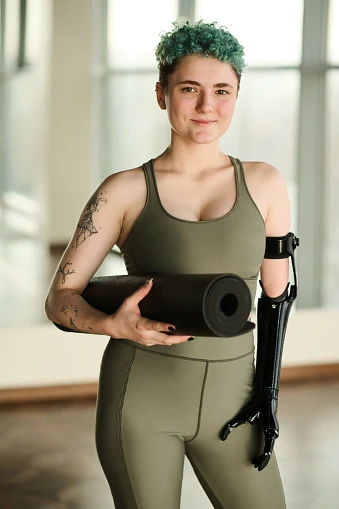
Are you awaiting amputation surgery, or has your healthcare provider discussed amputation with you and would you like to know more about what to expect after this operation? We at Amputee Care Center are here to answer all your questions. Feel free to contact us or check below to see if we have already answered your question.
Contact us by completing the Contact Form or by calling +32 (0)470 500 888. We are at your service.
That depends on how quickly your stump heals and stabilises. After amputation, you will usually first receive an evaluation prosthesis as soon as your stump is sufficiently resilient. The final prosthesis usually follows after at least six months, when the shape and volume of the stump are stable.
An evaluation prosthesis is a temporary prosthesis that helps you relearn how to walk, balance and function. It is used during the rehabilitation period to observe how your body adapts.
Not always, but pain is common. Some people experience phantom pain, where you feel pain in the amputated body part. This is normal and often temporary. At Amputee Care Center, we monitor this closely and offer support or referral to pain specialists where necessary.
The vacuum dressing, rigid dressing and compression therapy prevent oedema and protect the stump shortly after surgery. A special silicone liner helps to distribute pressure evenly and ensures consistent compression. This is important for healing and for forming a suitable stump for prosthesis use.
Yes. With the right guidance and motivation, most patients are usually back on their feet quickly. A lot of guidance is needed in the beginning. Depending on your condition and the type of prosthesis, you will learn to walk again, perform transfers (such as from bed to wheelchair) and regain your balance under the guidance of physiotherapists and prosthetists at the Amputee Care Center.
It is normal to experience feelings of sadness, frustration or uncertainty after an amputation. At the Amputee Care Center, we know that this process can also be mentally challenging. That is why we offer guidance from psychologists or experts with personal experience. We are also happy to help you regain confidence in your body and future, step by step.
Read the stories of experienced prosthesis wearersAbsolutely. Family, friends or a partner play an important role in your recovery. We actively involve them in the rehabilitation process, explain what they can expect and how they can support you.